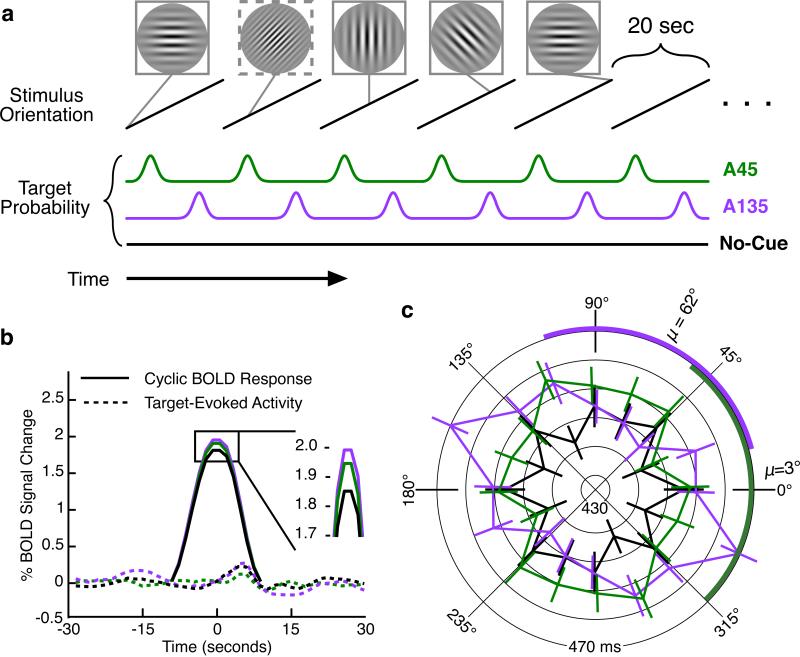1.
Selective attention in a change detection task. A. Human subjects viewed a full-field, continuously rotating Gabor and responded by button press when the spatial frequency of the stimulus briefly changed (dashed outline). During attention conditions, these target events were more likely to occur at a single orientation (green, A45; violet, A135). Prior to each trial, a static grating indicated to the subject the orientation about which targets are likely to occur. In one control condition, the target probability is static over time (No-Cue, black). B. Mean event-related response to stimulus rotation (aligned to preferred phase, solid) and to target events (dashed, aligned to individual target events per condition) averaged across all voxels with significant orientation selectivity. The response to individual target events was negligible, but removed via linear regression in all future analyses. The mean global response increased with attention. C. Reaction time, indicated by radius, is fastest prior to the cued orientation when subjects anticipate target events. [uni03BC], orientation with the fastest mean response during each Attend condition; colored arc, full-width at half-maximum (FWHM) range of fastest reaction times (A45 FWHM 98°, A135 FWHM 92°).

